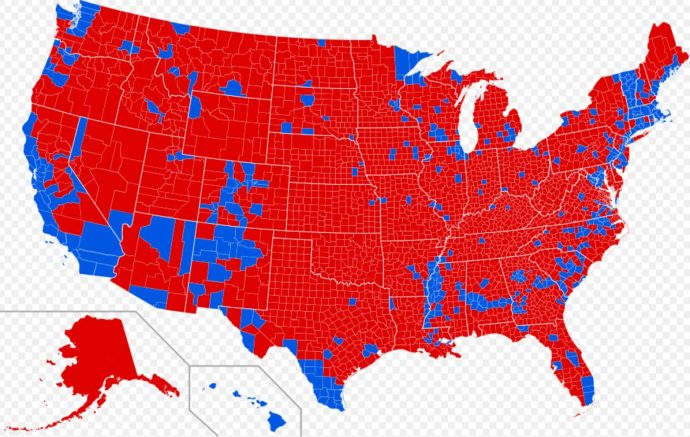Here is Ed Ring writing at UnionWatch.org:
In the aftermath of one of the most controversial presidential elections in U.S. history, many analysts are commenting on the sharp divide between how urban areas voted vs. how rural areas voted. In a map of the nation segmented by county, it is clear that at least geographically, Trump won overwhelmingly. Obviously this is misleading, since Trump lost the popular vote – at last count – by around 1.3 million votes.
To really appreciate this urban vs. rural split, there is a fascinating visualization created by Max Galka, using “Blueshift,” a application he’s developing to design and publish dynamic online maps. Pasted below is a static version of this map, which shows a vertical dimension for each county based on the number of votes that constituted each candidates margin of victory. Suddenly California’s San Bernardino County, the nation’s largest geographically, and Arizona’s Coconino County, the nation’s second largest, become insignificant (together these two account for around a third of Clinton’s “geographical” victories).
From the above map, only a few places stand out as decisive factors in Clinton’s popular vote victory – Seattle, Miami, New York City, and most prominently, Los Angeles and Chicago. In Los Angeles County, Clinton received 1,893,770 votes vs 620,285 for Trump. In Chicago’s Cook County, Clinton received 1,528,582 votes vs 440,213 for Trump. Let that sink in for a moment. If either of these two counties – either one of them – were taken out of the equation, the popular vote would have been a toss-up.
This pattern repeats itself across the U.S., and clearly there is a political and cultural schism today between America’s urban voters and rural voters. But what political forces are exploiting and exacerbating this schism? Why is the split between America’s urban voters and rural voters more dramatic than it’s ever been? If you want to answer this question, look no further than the single most powerful special interest that dominates nearly every major city in America – public sector unions.
Read more: UnionWatch.org

